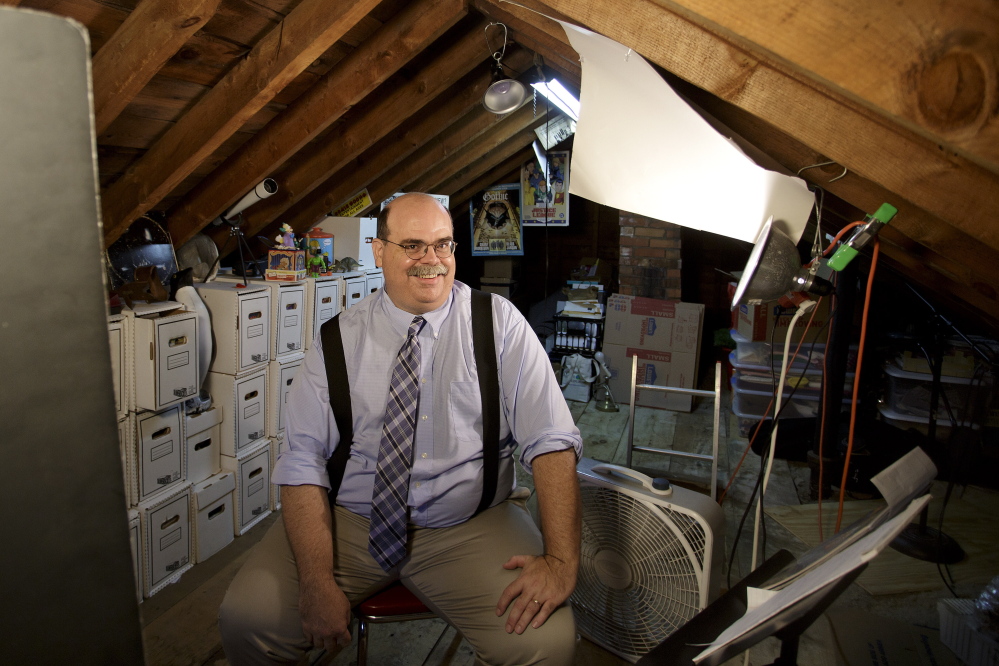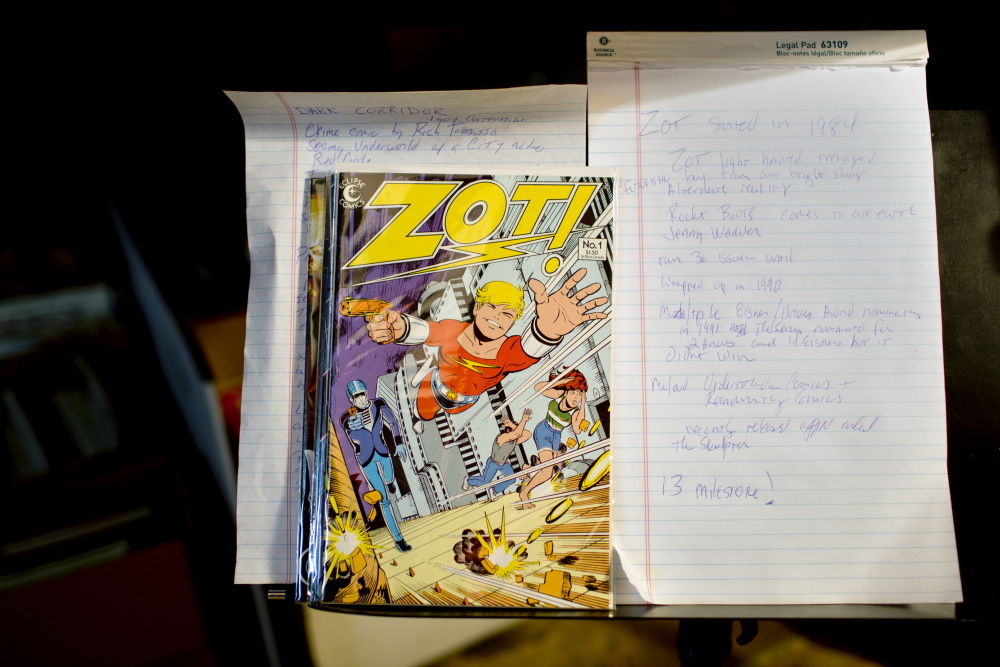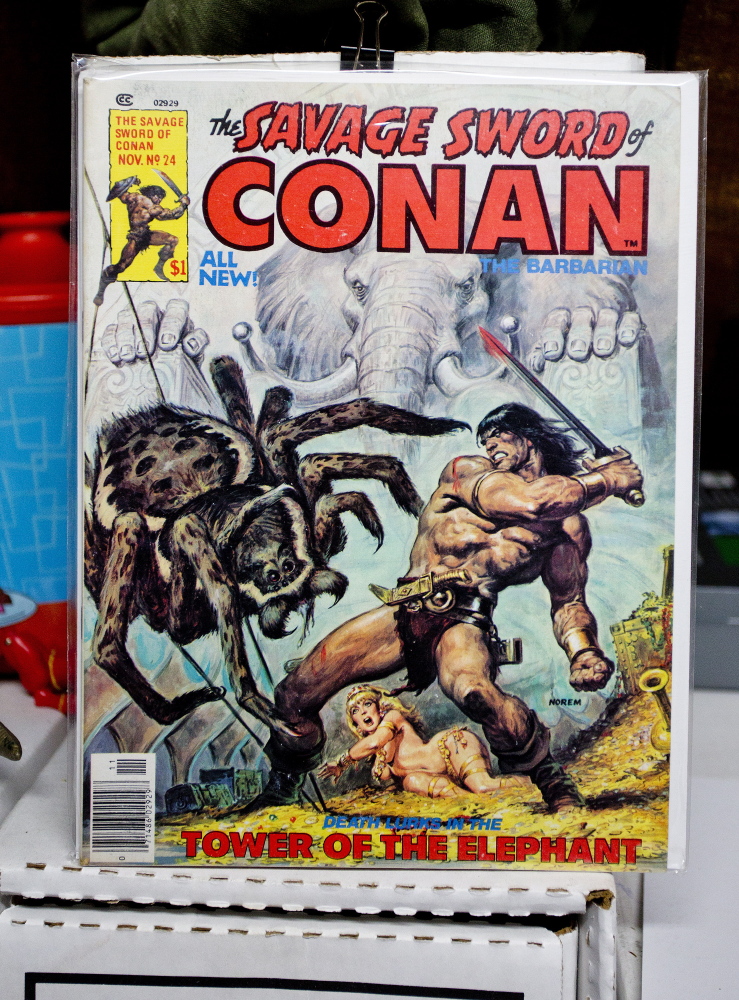For a long time, I had a secret in my attic.
It wasn’t a closely held secret, but you had to get reasonably close to me before I would reveal that I have had an obsession with comics, off and on, for over 30 years, and there are boxes upon boxes of them in my attic, efficiently filed and preserved.
Lately, however, I’ve thrown caution to the wind. As superheroes have become the hot media genre, I’ve started to get over the idea that people, when they learn my secret, will take me less seriously.
Every week, I climb the ladder to the attic, turn on my video camera and share, with the handful of people who care, my enthusiasm for an art form.
I’m old enough to remember watching and enjoying George Reeves as Superman in re-runs on our black and white TV. I remember the 1966 Batman TV show, but I’m pretty sure the original run was past my bedtime as a 5-year-old, when my fondest possession was my Superman costume.
The hook wasn’t set, though, until college, when I stumbled across a pile of Savage Sword of Conan magazines at a hotel where I was staying in Norway, Maine.
That led to a stop at a nearby comics shop. (Who had ever heard of such a thing in 1982?) and a whole world of art, story and history was opened up to me.
Now, more than 30 years later, I can see my collection of something like 7,000 or 8,000 comic and related books, magazines, and posters in the attic as a time capsule.
I have a nice selection of the comics I remember from my childhood in the 1960s. In each one, I can see reflected the kid culture of my early years. The fashions, the hairstyles, even the ads for the Saturday Morning Cartoon lineups, take me back to a time when all I wanted for Christmas was a new G.I. Joe.
What I didn’t know at the time was that I was seeing history unfold before my eyes. Pioneers like Jack Kirby, Stan Lee, Steve Ditko and John Romita were laying the groundwork for generations of to come, building on the work of the 1930s and ’40s, inventing a new language and timeless characters like Spider-Man, The Incredible Hulk, The Thing and Daredevil – characters that live on long after they (and I) are gone.
In the ’70s, science fiction and computers commanded my attention, opening my mind to the potential of the future, and a new generation of creators made their mark on the comics genre as it began to grapple with the changing world.
Writer Denny O’Neil and artist Neil Adams confronted racism in Green Lantern, and reclaimed Batman from his 1960s TV camp. Writer/artist Jim Starlin gave Captain Marvel a cosmic psychedelic twist. Bernie Wrightson’s artwork in Swamp Thing and House of Mystery elevated comic book illustration with a creepy realism.
As the ’80s dawned, the old distribution channels were changing. Comic stores started springing up and with them a new kind of reader. As the old system of self-censorship imposed on the industry during the witch hunts of the 1950s broke down, more adult-oriented content became commercially viable. Suddenly the topical playing field for comic storytellers was wide open.
This was the environment that spawned Frank Miller’s take on Daredevil, which drew liberally from the Japanese comics traditions, or Alan Moore’s Watchmen, considered by some the best comic book story ever published. This was the fertile ground that nurtured my obsession.
The industry had some bumps along the way. The collector/speculator boom and bust in the mid ’90s, embodied perhaps most significantly by the “Death of Superman” hype, took a toll, and Marvel Comics actually was in bankruptcy for a while. But the power of the images and ideas and the creative energy of the artists and writers persisted. Along the way, the nerds took over the world, and comic books somehow rose with them. Comics and graphic novels occupy spots in libraries, bookstores and best-seller lists. I don’t think the 5-year-old in his Superman costume ever would have doubted it, but the 30 year-old comics nerd struggling to be taken seriously never would have expected it.
If you buy five or 10 of something every week, for 20 or 30 years, they start to pile up. In my attic, I have a singular record of the ebbs and flows of an industry and my relationship with it. I have a chronicle of the artistic evolution of both a media industry and the talented creators whose work I admire and enjoy. I have a detailed document of the prevailing attitudes reflected in popular culture of the last 50 or so years. There are stories on the pages, and there are stories behind the pages, and both are fascinating.
Chad Gilley is digital product manager for Maine Today Media, parent company of the Maine Sunday Telegram. Learn more about his collection at www.chadsattic.com. He can be contacted at:
cgilley@mainetoday.com
Twitter: ChadGilley
Send questions/comments to the editors.





Comments are no longer available on this story